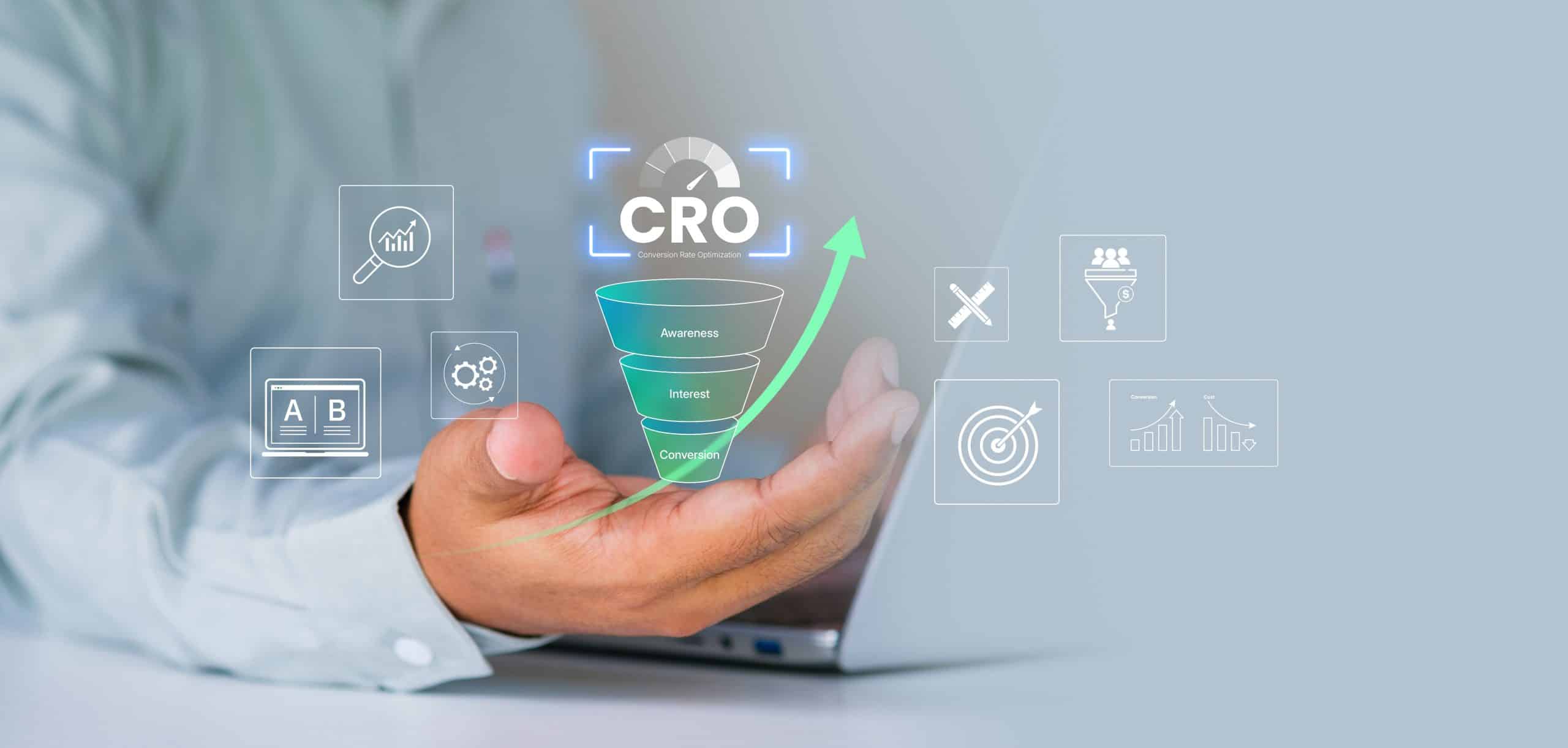- Common Pain Points Every Affiliate Experiences with Lead Generation Campaigns
- Sub-Optimal Contact Form Conversions
- Lack of Data Feedback for Optimization
- Challenges With Lead Quality and Targeting
- Integration Complexity and Bandwidth
- Inconsistent Lead Flow Performance
- End the Frustration with Realize Seamless Integration
- Seamless Integration with Contact Forms
- Algorithm-Driven Optimization via Form Data
- Precise Targeting Based on Form Insights
- In-House Expertise for Integration and Optimization
- Flexible Lead Flow Support
- Cost-Effective Lead Acquisition Through Form Optimization
- Key Takeaways
Affiliate agencies and media buyers know that lead generation is both rewarding and a relentless challenge. Even with strong traffic, many teams struggle to achieve profitable, scalable growth over time. This is often due to issues at the same point in the funnel — poorly converting contact forms, missing or incomplete conversion data, or limitations in targeting that result in low-quality leads draining your budget. With one or all of these issues, maintaining performance consistency across campaigns can be even more difficult.
Taboola built Realize to tackle these problems head-on, creating a performance marketing platform designed to eliminate these ongoing frustrations. The tool offers seamless contact form integration, intelligent optimization, and the backing of experienced account managers to help you stop wasting money and scale more confidently.
Lead generation is more than simply looking at contact form completions. Instead, it’s about a continuous cycle of engagement, qualification, and conversion that reduces wasted ad spend and maximizes revenue. By blending data feedback with machine learning, Realize ensures that every impression works hard and allows affiliates to adapt faster in an ever-competitive landscape.
Common Pain Points Every Affiliate Experiences with Lead Generation Campaigns
Sub-Optimal Contact Form Conversions
Regardless of how strong your creative or how effective your traffic acquisition strategy is, a poorly put-together contact form will naturally decrease your overall performance. Across industries, the average conversion rate for forms is sitting at 1.7% in 2025. This means that the vast majority of visitors to your site never actually become leads.
When only 9% of people who view a contact form actually submit it, even the smallest design flaws or excess number of fields can cost affiliates significant revenue. For media buyers tasked with proving return on investment (ROI), these missed conversion opportunities represent wasted impressions, ad spend, and opportunities for optimization.
Consider a campaign that drives 100,000 visitors to a landing page each month. At a 1.7% conversion rate, that would yield 1,700 leads. But, improving conversion by 1% to 2.7% could generate 1,000 more leads without spending additional money on traffic. That type of marginal gain is often the biggest difference between an unprofitable campaign and scalable success.
For many advertisers, this type of gain is often impossible when efforts are focused too heavily on top-of-funnel tactics like constant creative refreshes or publisher placement. While these are, of course, important aspects to consider, Realize makes it possible to transform the point where traffic becomes value: your forms.
Lack of Data Feedback for Optimization
Failing to channel a full data picture back into your advertising platform is another serious problem that many affiliates and media buyers come across. Without closing the loop, algorithms can’t learn what a valuable conversion looks like for your business, leaving campaigns stuck at the top-of-funnel stage.
From this, budgets continue to fuel clicks and impressions without the intelligence needed to improve overall lead quality. This can be incredibly costly for marketers not using automated lead generation tools. Without integration of data at every stage, potential leads remain untapped.
In today’s privacy-first environment, where third-party cookie tracking is becoming more of a challenge, being able to understand exactly what data means and capturing as much as possible is essential. By leveraging first-party conversion data from forms to train algorithms like those used in Realize, you can gather and benefit from a more robust set of data points that actually make a difference in your campaigns.
Challenges With Lead Quality and Targeting
Driving the right amount of traffic for your campaign is only half of the challenge — ensuring the leads that you do receive have genuine interest in what you’re offering is where the greatest profitability lies.
If forms fail to capture key demographic data such as age, income, or location, or if your platform can’t act on that data, you risk filling your sales pipeline with low-quality leads. This makes it almost impossible to filter out your unprofitable segments, leading to inflated cost-per-lead (CPL) figures and inconsistent returns across campaigns.
Media buyers often find themselves scaling campaigns that look successful on paper, only to discover that the downstream value of the leads generated doesn’t justify the overall campaign spend. Granular targeting has never been more important, particularly in industries like insurance or financial services, where acquiring a lead outside of your core demographic (like age range or income) is an immediate loss for the campaign.
Integration Complexity and Bandwidth
Technical integration is one of the biggest obstacles that marketing teams face. Between different site forms, custom landing pages, and legacy systems already in place, connecting each setup to your advertising platform takes time, resources, and, in some cases, specialized knowledge.
Lean affiliate teams rarely have the bandwidth to work on these projects to any great extent and, even when integrations have been completed, they’re often fragile or inconsistent. This ongoing issue creates a drain on campaigns and can result in some of the many issues already discussed — campaign performance is hindered due to unoptimized or inconsistent data.
Inconsistent Lead Flow Performance
Even once everything for a campaign is live, lead flow performance is rarely stable. A form or landing page that performed well during one flight could decline once ad fatigue sets in, or when targeting parameters change.
Without a reliable framework for identifying which form variations are true winners, affiliates run the risk of being caught in inconsistency cycles. As a result, budget allocation becomes riskier, scaling is more difficult, and profitability hits a standstill. Reporting also becomes more difficult with these inconsistencies, forcing affiliates to explain week-over-week volatility to clients who are looking for and expecting steady campaign performance.
End the Frustration with Realize Seamless Integration
Taboola’s Realize platform was built to solve these exact problems, designed to generate high-quality leads through re-engaging high-intent audiences. By leveraging display advertising on the open web and optimizing contact form integrations, Realize combines technology, data, and human expertise to create a single solution for more effective lead generation.
Seamless Integration with Contact Forms
With Realize, integration is straightforward. Robust pixel capabilities work across numerous platforms like Shopify, with every form completion automatically tracked and attributed. Instead of having to hunt down lost data, agencies and media buyers can feel confident that your campaigns are backed by accurate, comprehensive data collection and reporting.
Realize also reduces implementation timelines, taking what once required several weeks of developer time and achieving the same result within hours. This means that affiliates can launch faster and spend more time focusing on creative strategy and audience testing, giving you a competitive advantage.
Algorithm-Driven Optimization via Form Data
Once conversion data is recorded, Realize can learn from this information to provide greater insights for campaign optimization. The machine learning algorithms built into the tool incorporate both completed forms and micro-conversion data such as partial form fills or click-to-call actions, training on these signals to identify patterns of user behavior or find similar audiences to market to.
Over time, these campaigns become more efficient, with lower cost-per-lead (CPL) and scalability that’s more achievable than without these functions. As your campaign evolves, Realize adapts to support. This is particularly helpful if you have seasonal trends that impact user behavior — the algorithm learns this and recalibrates as necessary.
In terms of how much data is required to meaningfully train Realize’s optimization algorithms, “Typically, the more the merrier when it comes to signals,” says Jeremy Bade, advertising sales manager, growth, at Taboola. “However, if I can get at least two signals, I can get plenty of leads into a form. If CPA is high and we have only one signal, we don’t know where the drop-off is within the form. A third event which is focused on either qualified high intent leads, or leads that converted with a monetary value attached, would be the gold standard — that way, we can optimize towards a more ‘raw’ lead to begin with, then shift the algorithm down the funnel to the most qualified users once we hit 50 qualified leads/high monetary value leads.”
Precise Targeting Based on Form Insights
Another key advantage of Realize is its ability to sharpen audience targeting with form-derived data. If analysis shows certain age brackets or demographics that consistently fail to convert (e.g., over 55s), advertisers can exclude that audience to preserve overall campaign budget.
Likewise, high-performing segments of your audience can be prioritized, investing more of your ad spend into the most likely-to-succeed segments. Rather than generic top-of-funnel targeting, affiliates gain a feedback loop that continuously refines audience quality.
In-House Expertise for Integration and Optimization
While the technology behind Realize is incredibly powerful, the real differentiator is Taboola’s in-house expertise. Dedicated account managers support our clients every step of the way, from solving integration challenges to analyzing campaign lead flow performance.
This human layer to every campaign ensures transparency across the board. Affiliates never have to wonder why performance metrics are changing, as account managers are on hand to provide context, analysis, and offer actionable recommendations that create confidence and build a long-term trusting partnership.
By adjusting targeting and form design, clients can see significant increases in lead form completions and a drop in CPL, thanks to insight from account managers. With expert oversight, you can turn their knowledge into real revenue gains for your business.
In terms of common design mistakes made on lead forms that lead to drop-offs, for example, Bade has this advice: “Think about your lead form from the point of view of an end user: If your hook gets them on the page, but your lead form seemingly adds no value to what they were just hooked by, it’s likely to fail. Put yourself in the user’s shoes and design a contact form that follows that train of thought. If, say, I’m working on auto insurance lead generation, I might write, ‘Drivers may be getting overcharged by these companies, find out if yours is on the list!’ But, if it then just goes straight into the form without asking, ‘What provider do you use?’ then it’s likely to turn folks away, as they’ll see it as a cheap tactic to get their information.”
“You have to give before you take,” Bade continues. “You shouldn’t ask for things that are too personal on the first click into a form — you need to gain trust by assuring them that you have reputable information for them. Gone are the days of, ‘Enter name, DOB, state, etc.’ right at the beginning of the lead funnel.”
Flexible Lead Flow Support
Every lead generation campaign is different and unique, which is why Realize supports multiple acquisition flows. Whether you’re driving traffic to a traditional lead form, exploring click-to-call options, or even working with a hybrid strategy, Realize can seamlessly adapt to what your business needs. This flexibility means that advertisers can continue to explore new lead generation channels, without sacrificing optimization.
Cost-Effective Lead Acquisition Through Form Optimization
Ultimately, the goal of any affiliate or media buyer is to achieve profitability through low cost-per-lead and maximum return per lead. Realize makes this possible by tying optimization directly to form completions, ensuring that algorithms work towards these intended outcomes. By lowering acquisition costs overall, while maintaining or increasing lead quality, affiliates can feel confident in reinvesting and scaling with data-driven insights that generate the results you’re looking to achieve.
Key Takeaways
Lead generation will always come with its challenges, but you don’t have to keep facing the same issues again and again. Contact forms that barely convert, algorithms trained on poor data, low-quality leads, and unpredictable results can all become pain points for even the most experienced media buyer.
With Realize, these obstacles can be turned into opportunities. By ensuring seamless integration with existing tools and harnessing algorithm-driven optimization, Taboola equips advertisers to transform underperforming funnels into scalable growth engines that maximize revenue.
The future of lead generation belongs to marketers who can effectively combine technology with actionable insights. Platforms like Realize not only automate the repetitive tasks that drain valuable resources, but also empower marketers to focus on strategy and long-term growth planning.
Start your journey with Realize today and discover how Taboola can help you unlock new growth for your business.



